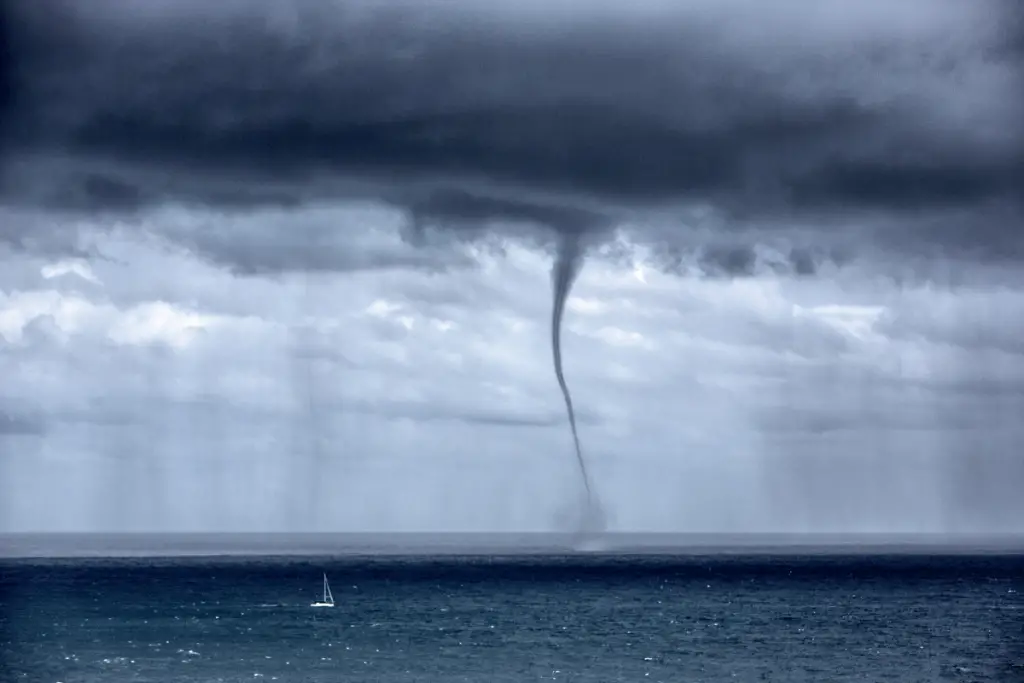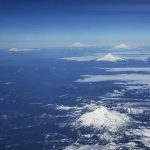Key Takeaways:
- Waterspouts are remarkable offshore weather phenomena resembling swirling columns connecting sea to sky.
- They last briefly, often five to ten minutes, with winds exceeding 100 kilometers per hour and potential for significant boat damage.
- Waterspouts share similarities with land tornadoes but can form from smaller storms, showers, or specific cloud formations.
- Formation occurs when winds from different directions converge, causing rotating air and eventual water suction.
- Waterspouts are most prevalent along the NSW and Queensland coast of Australia, typically in autumn and winter.
Waterspouts, captivating and often likened to the onset of an extraterrestrial incursion, are awe-inspiring meteorological occurrences that frequently make waves across social media. These enigmatic offshore twisters are characterized by a whirling column of air drawing up water, crafting a twisting vortex of water and cloud linking the ocean and the heavens. Despite their breathtaking display, waterspouts are evanescent, seldom enduring beyond five to ten minutes, yet boasting winds that can exceed speeds of 100 kilometers per hour, potentially wreaking havoc on sea-faring vessels. In instances where they make landfall, as witnessed with the Lennox Head tornado in 2010, the aftermath can be devastating, with a dozen homes in northern NSW left in ruins.
While sharing certain traits with their land-based counterparts, tornadoes, waterspouts differ in their genesis. Unlike tornadoes, which stem from colossal supercell thunderstorms, waterspouts can materialize from more modest storms, showers, or specific cloud formations. Their formation hinges on the convergence of winds blowing from opposing directions, culminating in a convergence line or shear line, where copious amounts of rotating air near the surface coalesce. This collision induces an upward movement of air, carrying water vapor aloft, resulting in the genesis of rain showers, storms, and cumulus clouds. As the upward movement persists, it imparts a vertical spin to some of the horizontally revolving air near the surface. When this vertical rotation intensifies at a specific point, it commences the process of water suction, giving rise to a waterspout.
In Australia, waterspouts predominantly grace the coastal regions of NSW and Queensland. The mornings often witness the meeting of cooler nighttime air emanating from the land and warmer air stationed at sea. This convergence typically yields an offshore cluster of clouds where the two air masses collide. Under specific conditions, notably in the autumn and winter seasons when the land experiences cooling while the sea retains relative warmth, this collision escalates, leading to the emergence of waterspouts.
Forecasting waterspouts presents a formidable challenge. While they may appear colossal to the casual observer, to meteorologists examining global weather patterns, they are relatively small-scale phenomena. This diminutive scale, coupled with their fleeting existence, renders accurate forecasting a near-impossible endeavor. Although meteorologists can identify the weather conditions conducive to waterspout formation, pinpointing their exact location or timing remains an elusive feat.
#1 Waterspout and rain off Mona Vale Headland, Sydney, New South Wales. Credit: Pamela Pauline

#2 A waterspout near Florida in 1969. Two flares with smoke trails (near base of photograph) have been discharged to indicate wind direction and general speed. Dr. Joseph Golden, NOAA

#3 Waterspouts over the Great Lakes. National Oceanic and Atmospheric Administration

#4 Four of five waterspouts seen South of Summerland Key at 6:37PM on June 5, 2009

#6 Waterspouts on the beach of Kijkduin near The Hague , the Netherlands on 2006 August 27.

#7 Photograph of a waterspout over the Peace River. Author: Punta Gorda Police Department

#8 A Waterspout in Florid. Image Credit & Copyright: Joey Mole

#9 Waterspouts form over water bodies such as lakes, seas, and harbors.

#10 Catch My Drift Charters captured this image of a waterspout in the Whitsunday Islands of Australia on April 11, 2023

#11 Mark Rutkowski said on July 3, 2020, that he caught this sunrise waterspout in the Atlantic Ocean near Miami.

#12 Double Waterspout

#13 Funnel Cloud

#14 Volcanic Waterspouts



